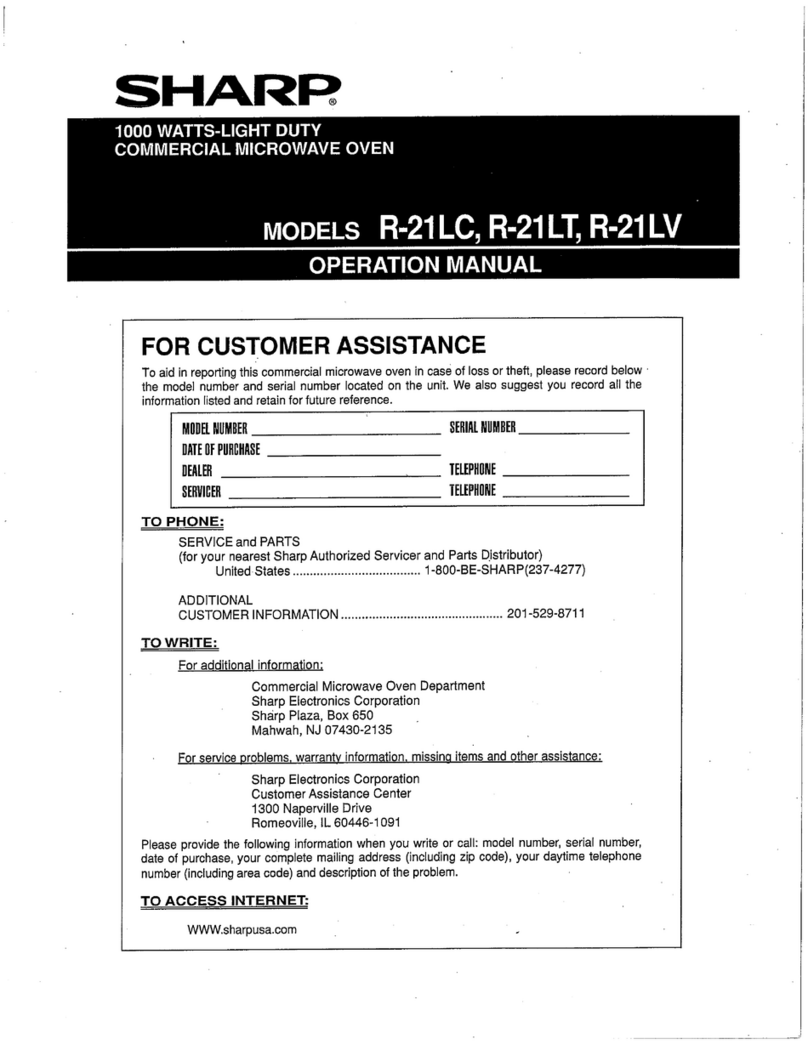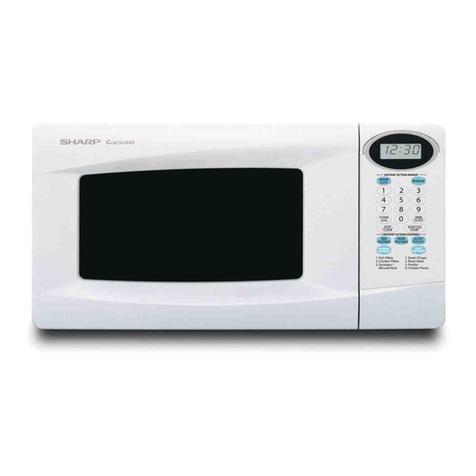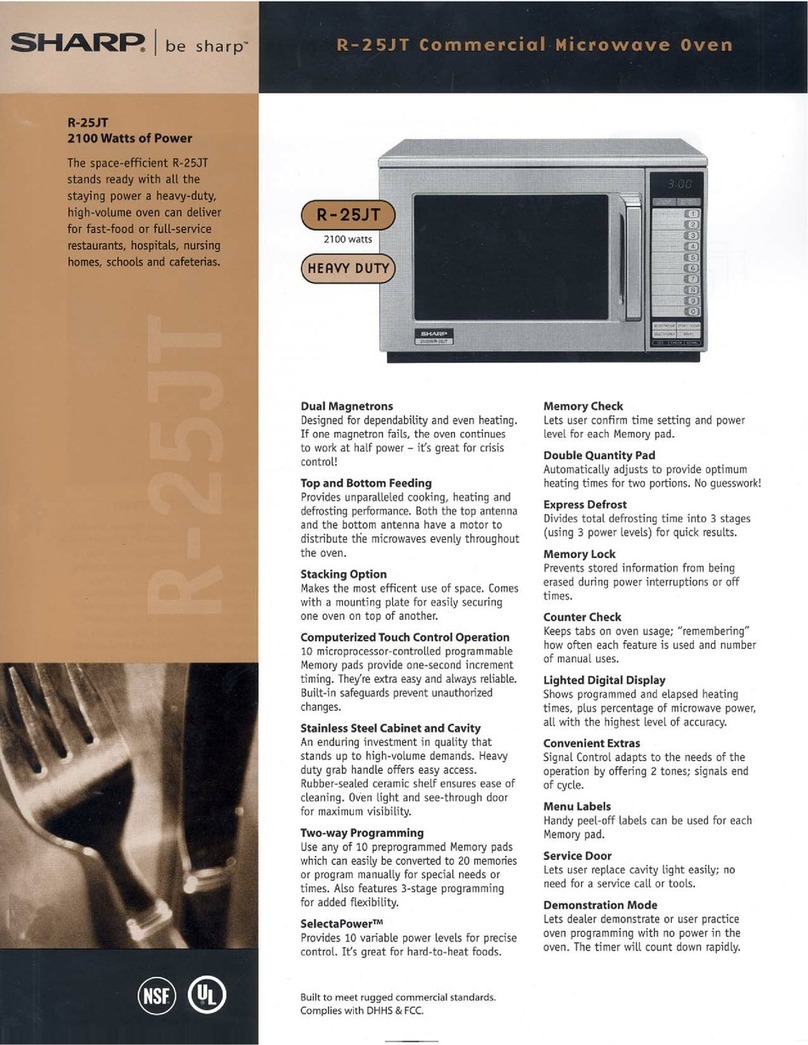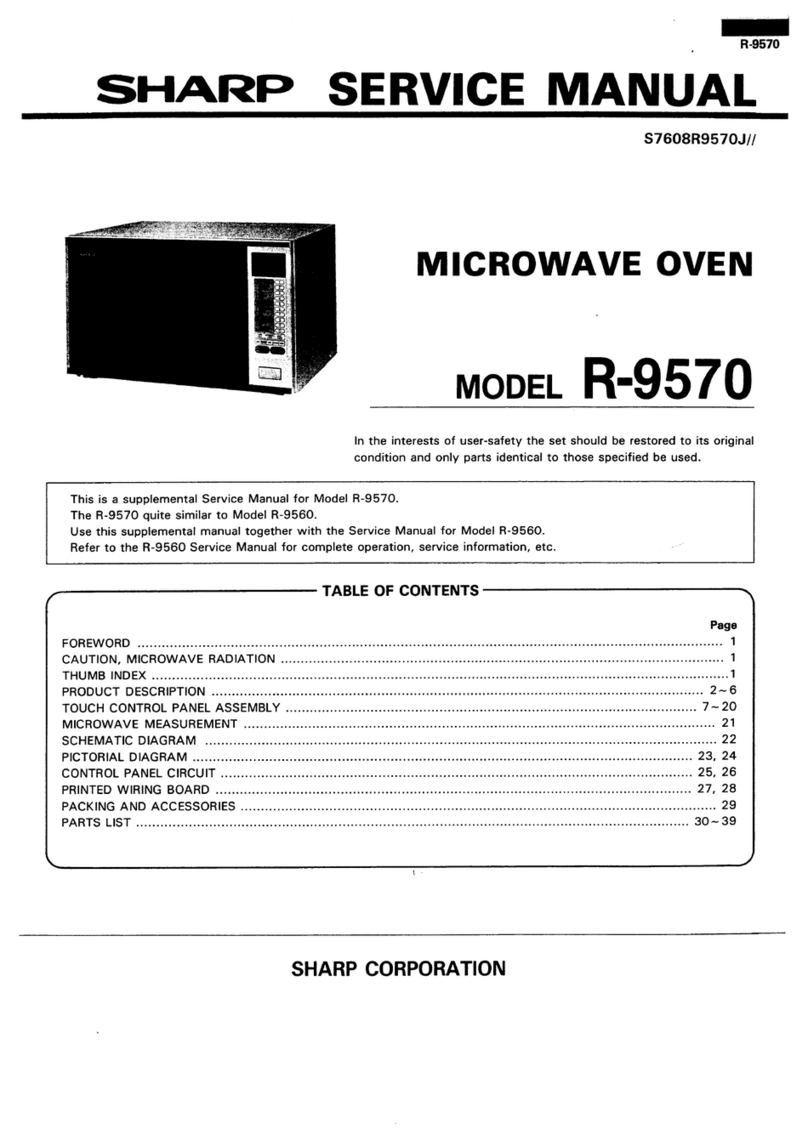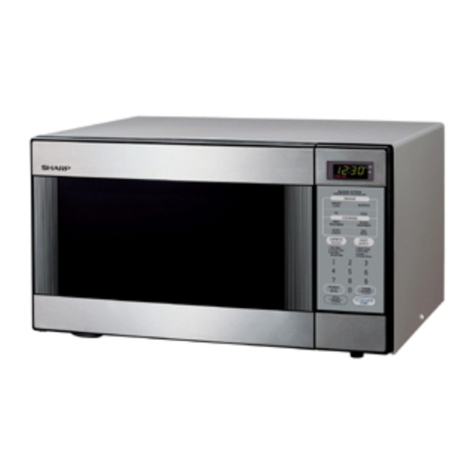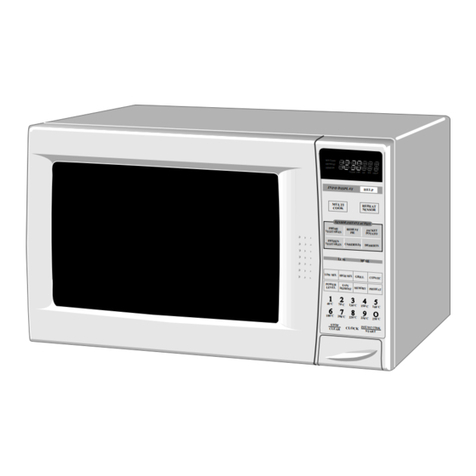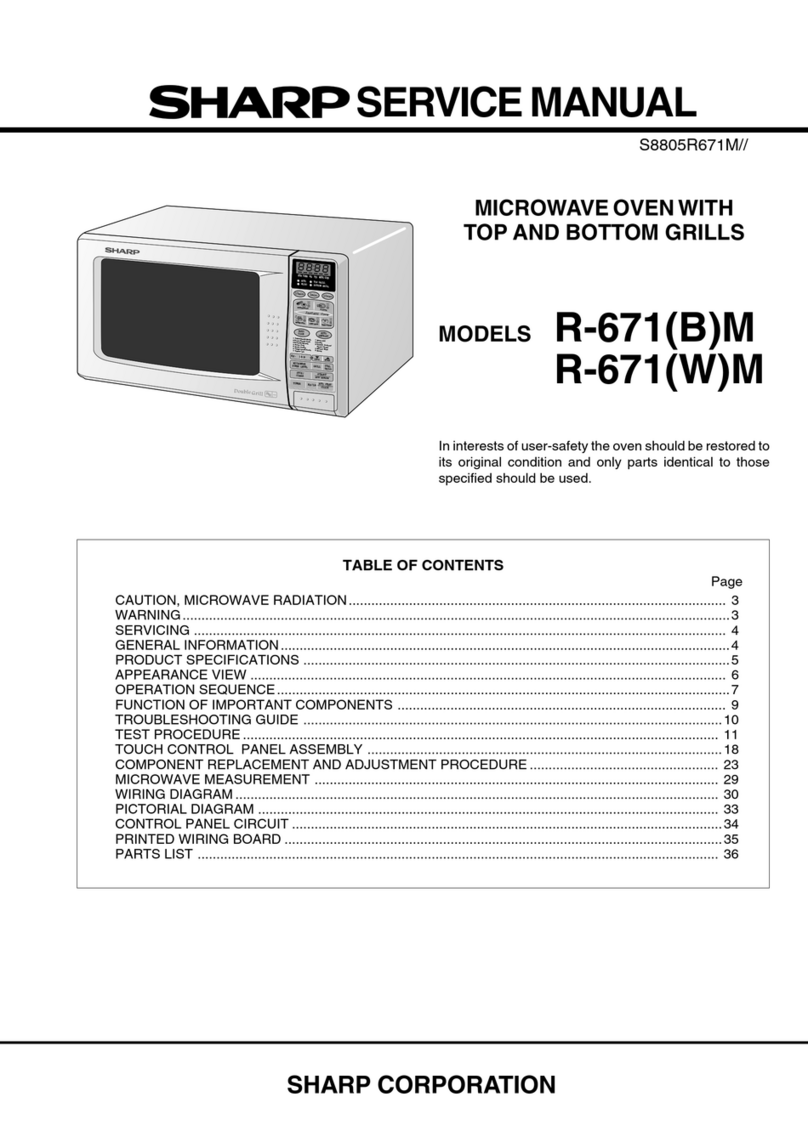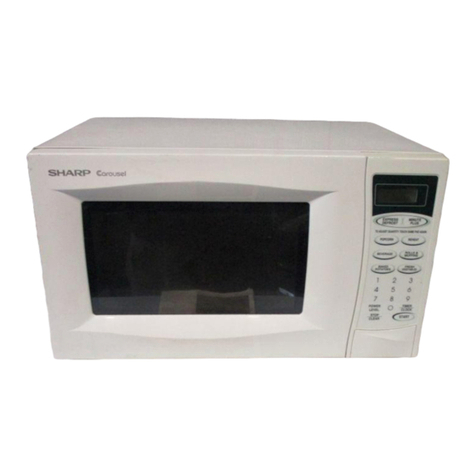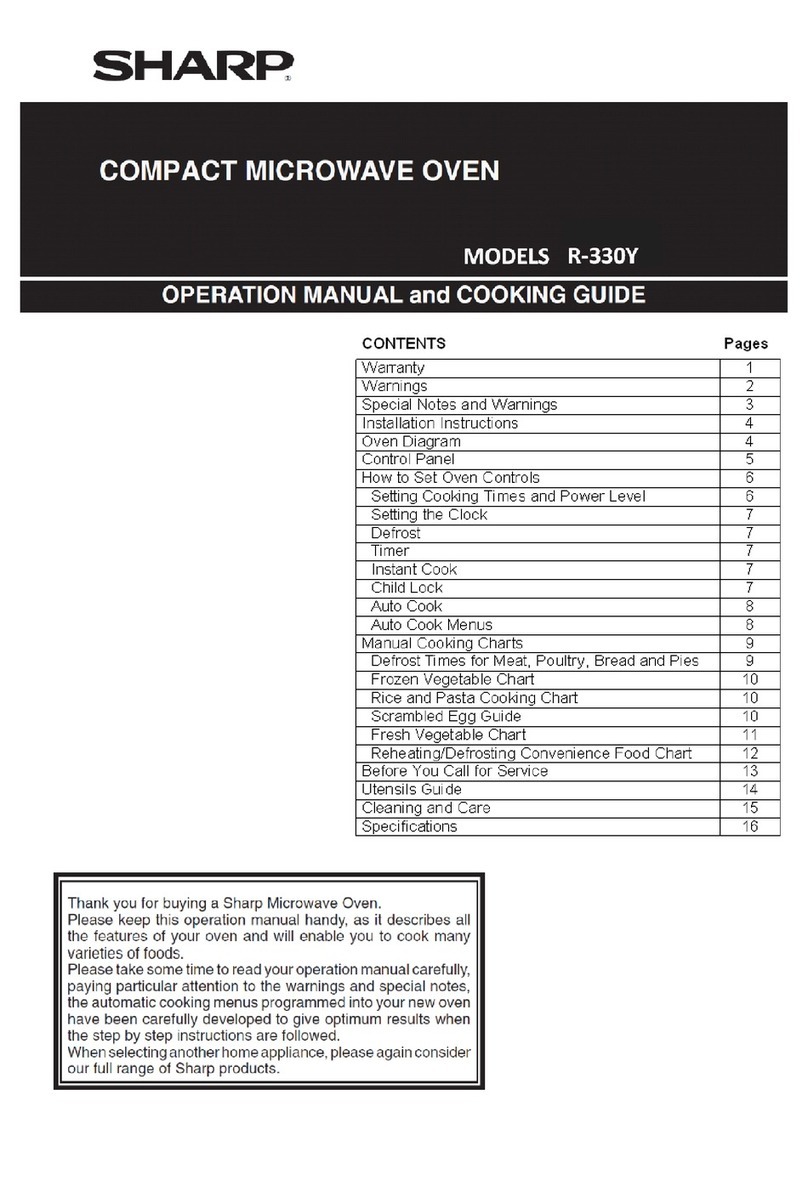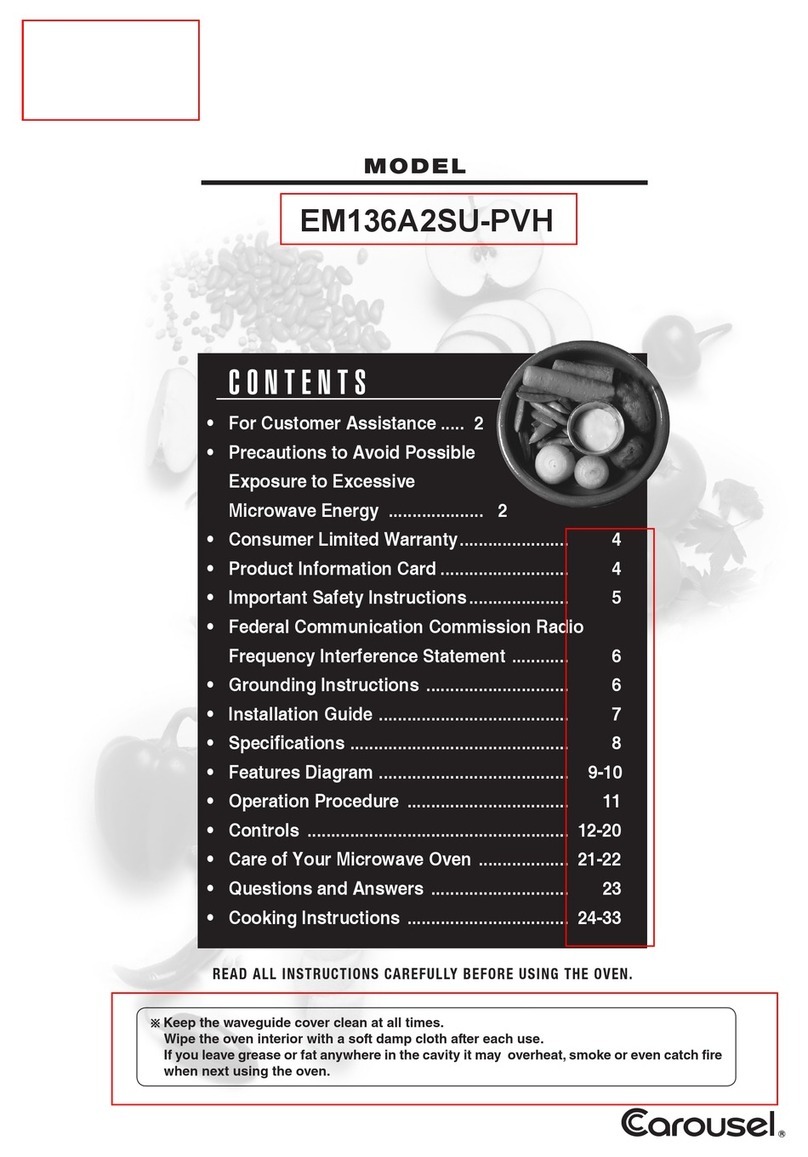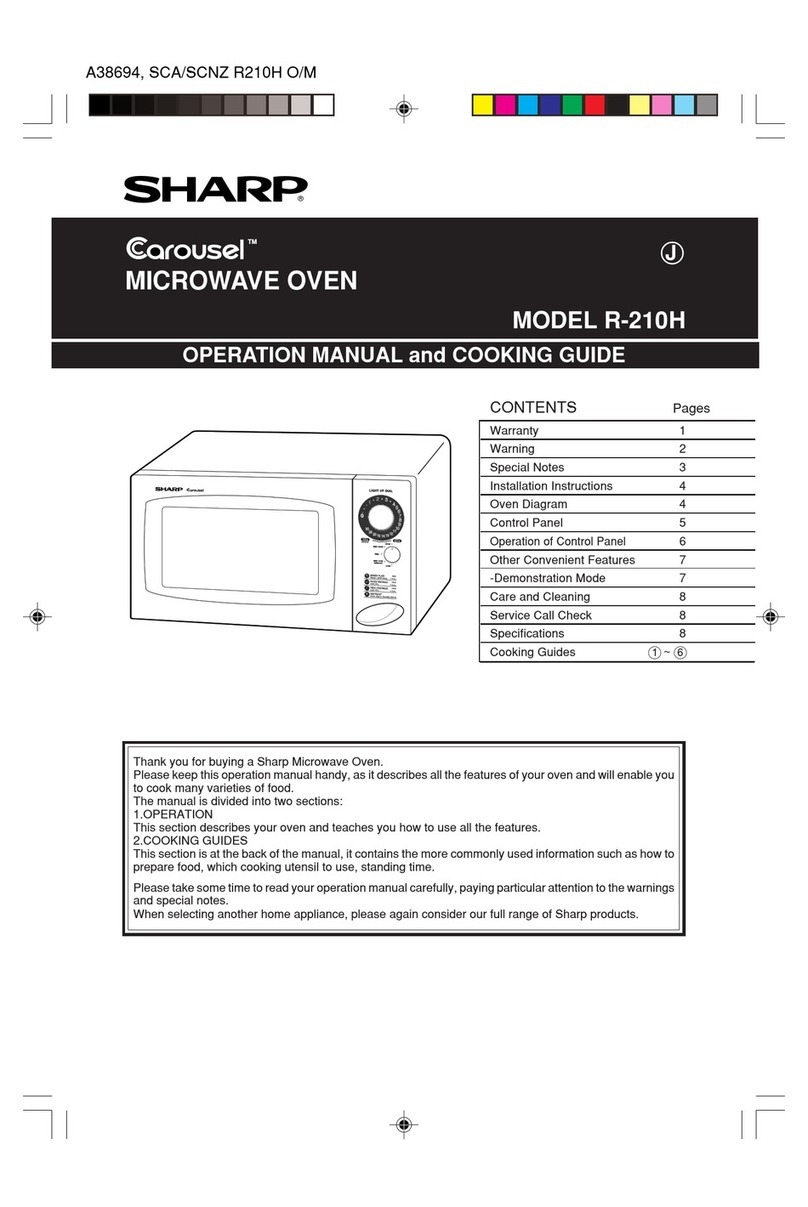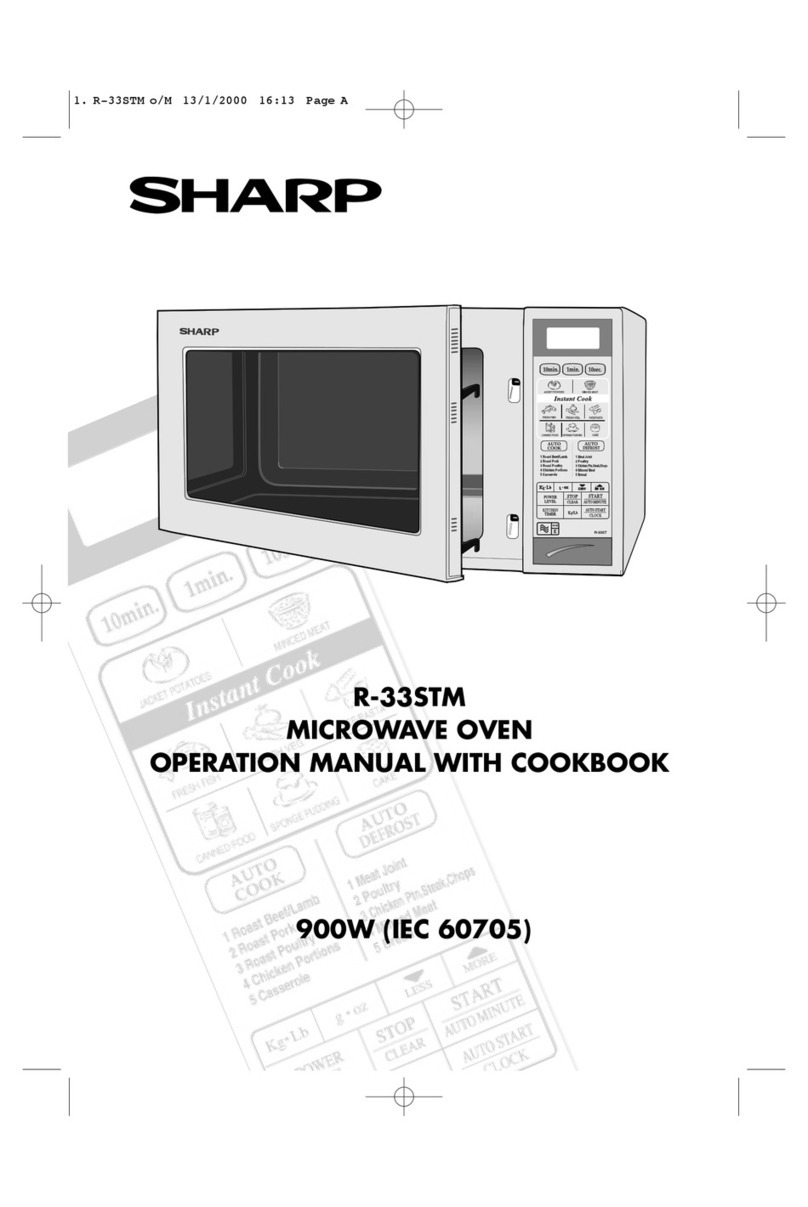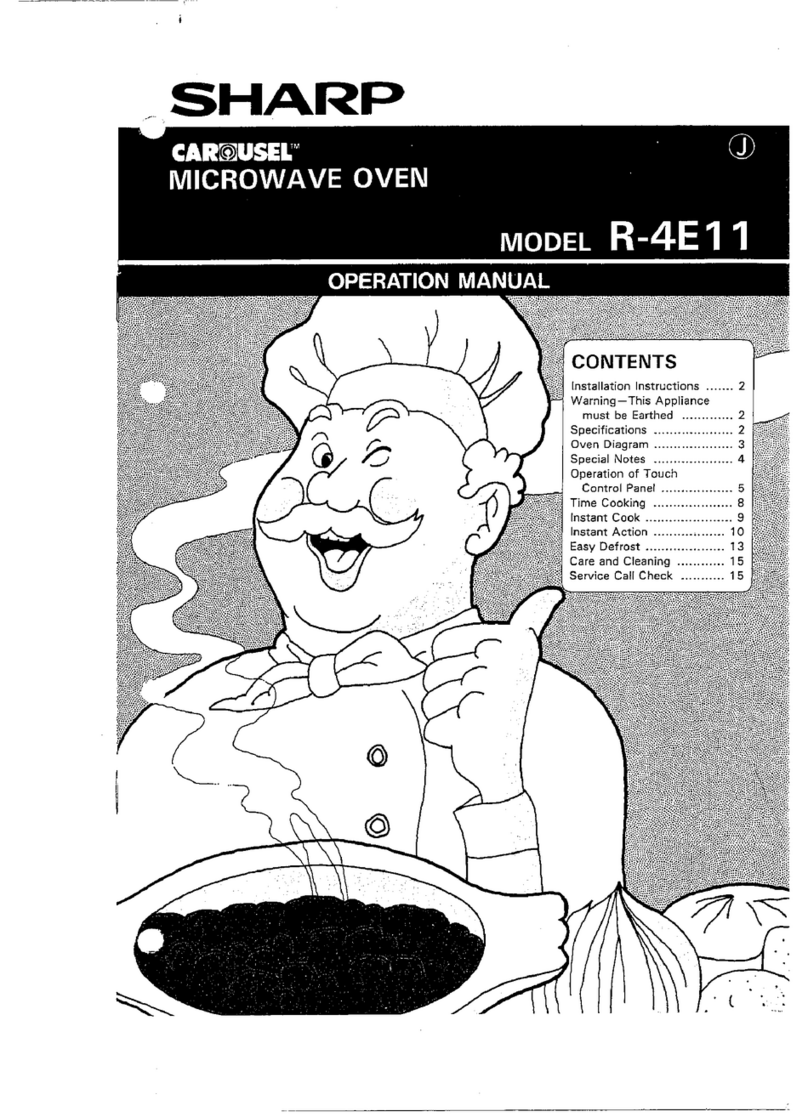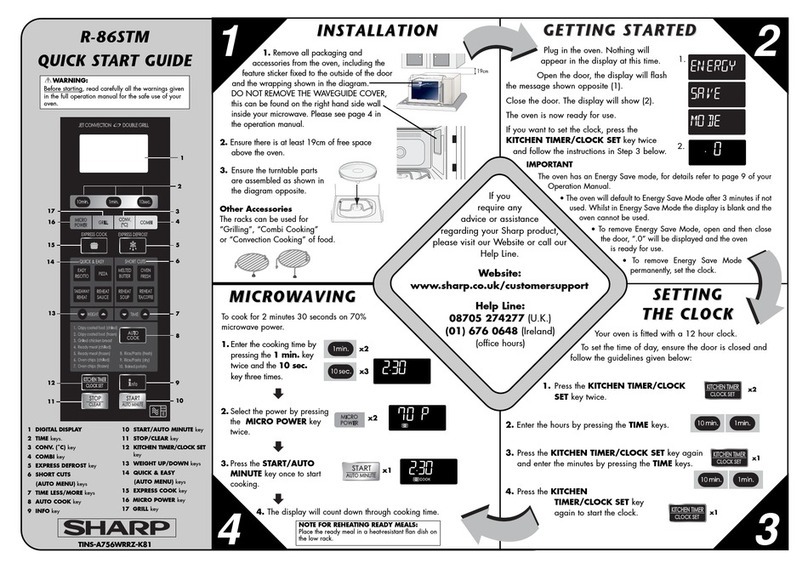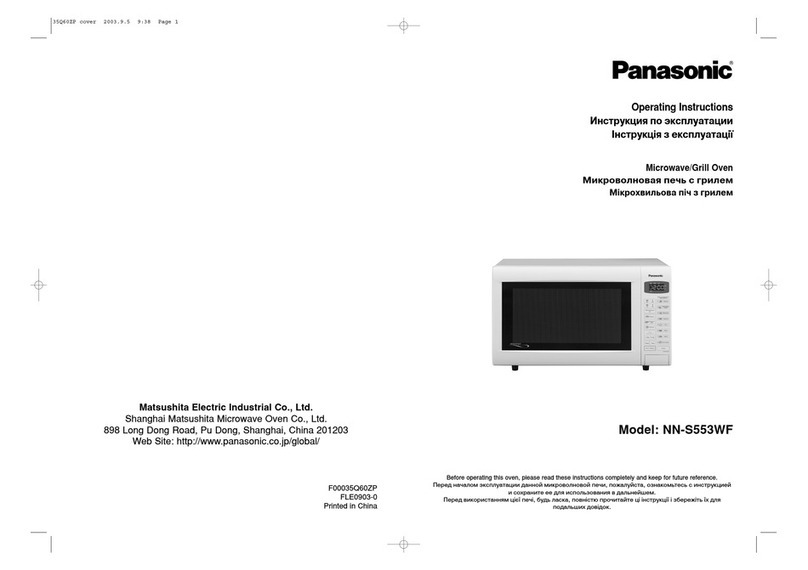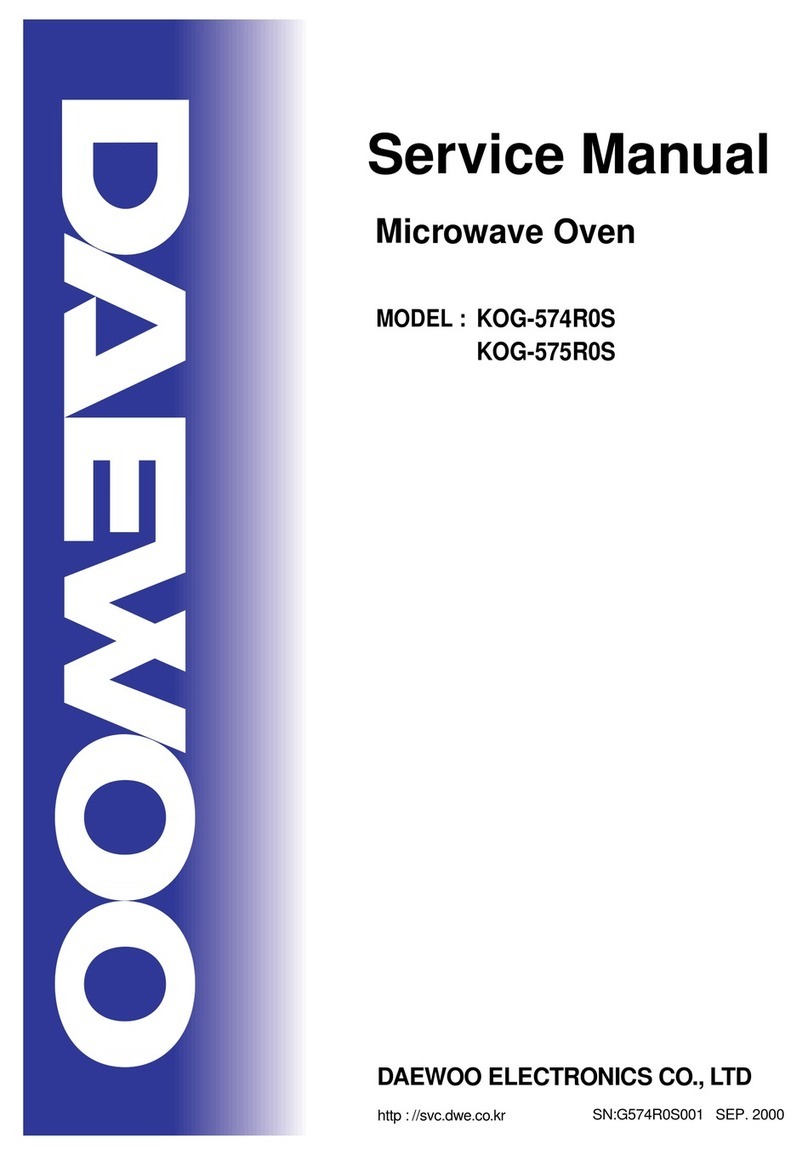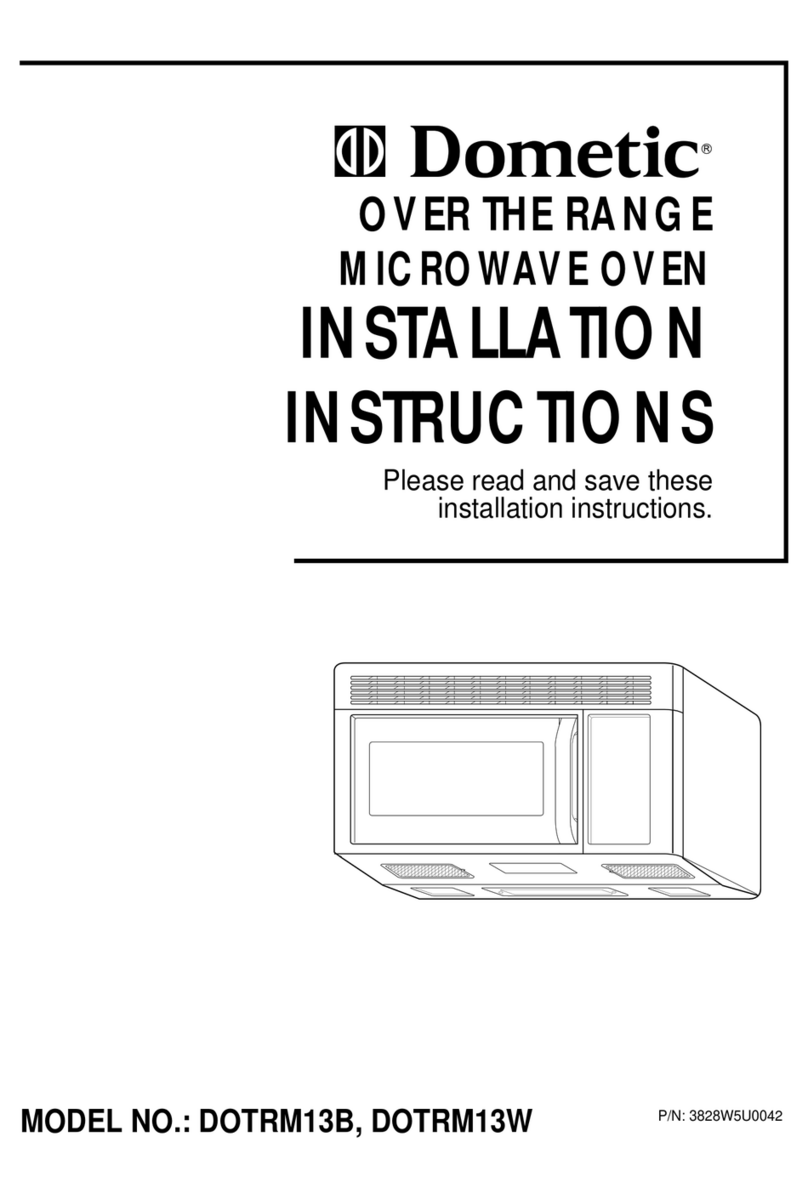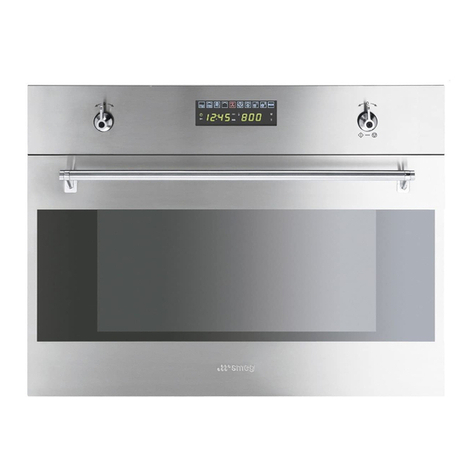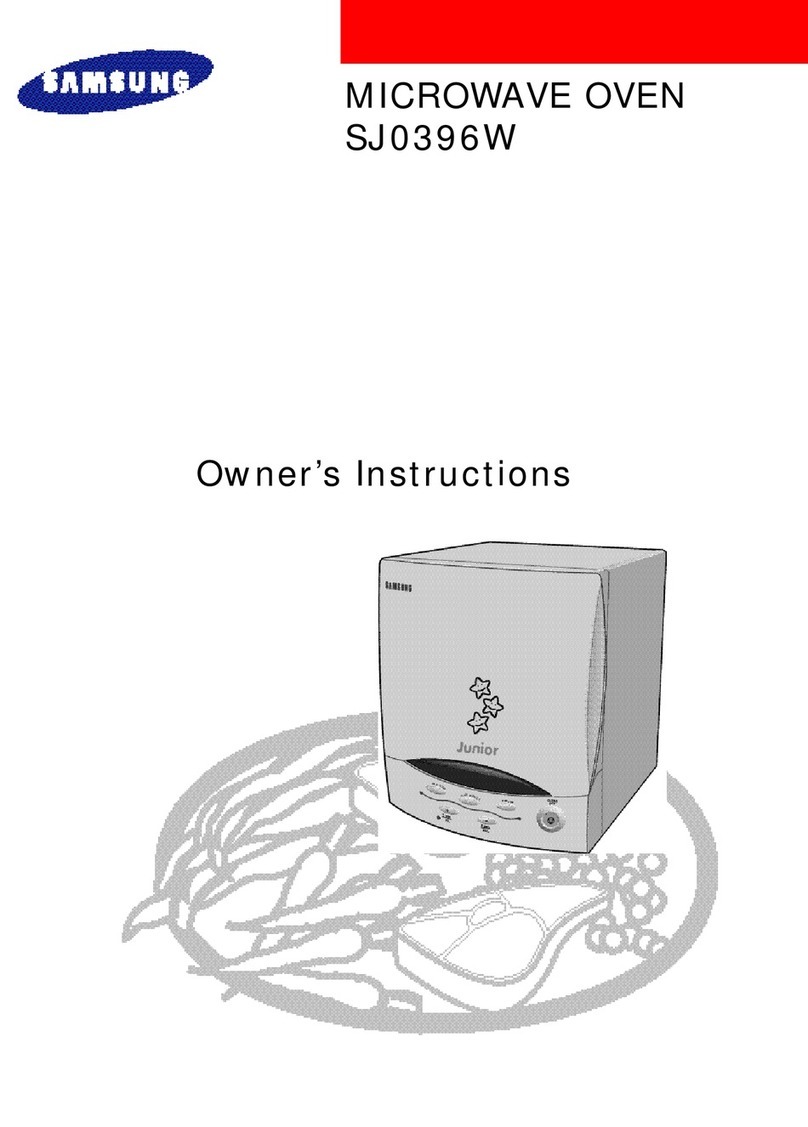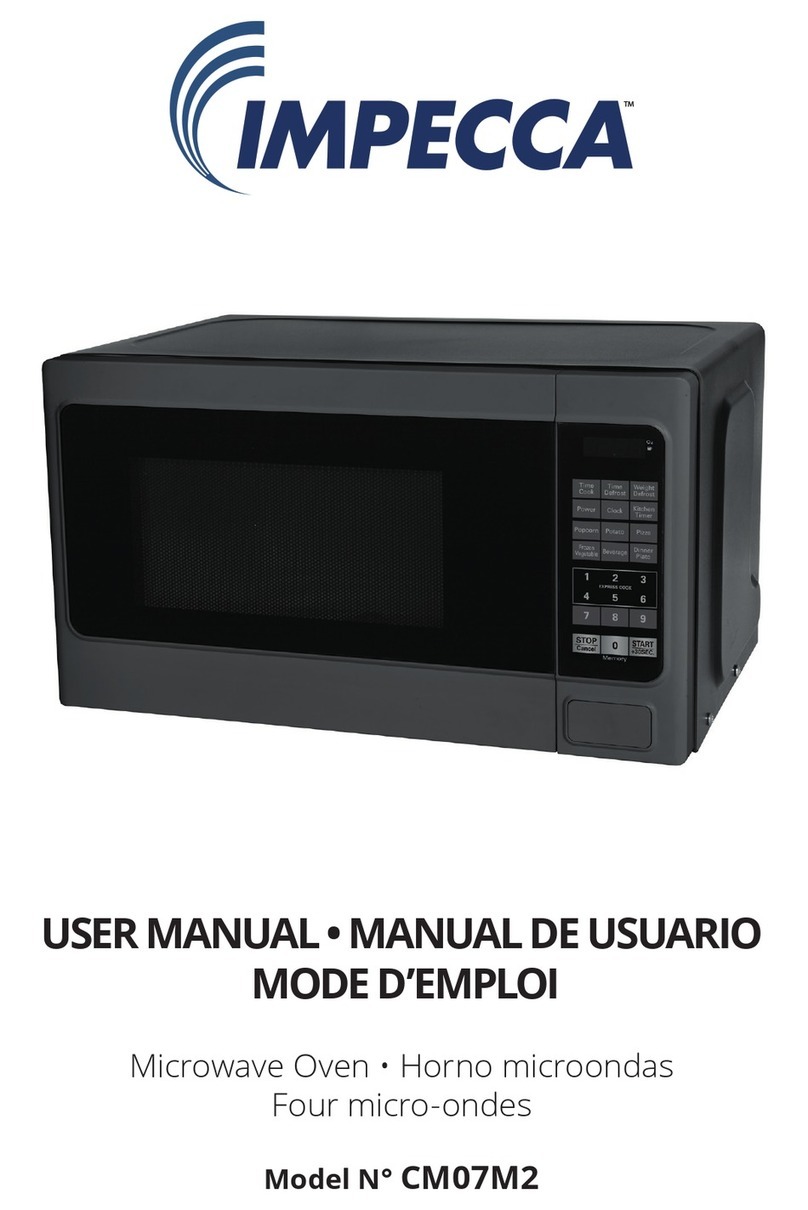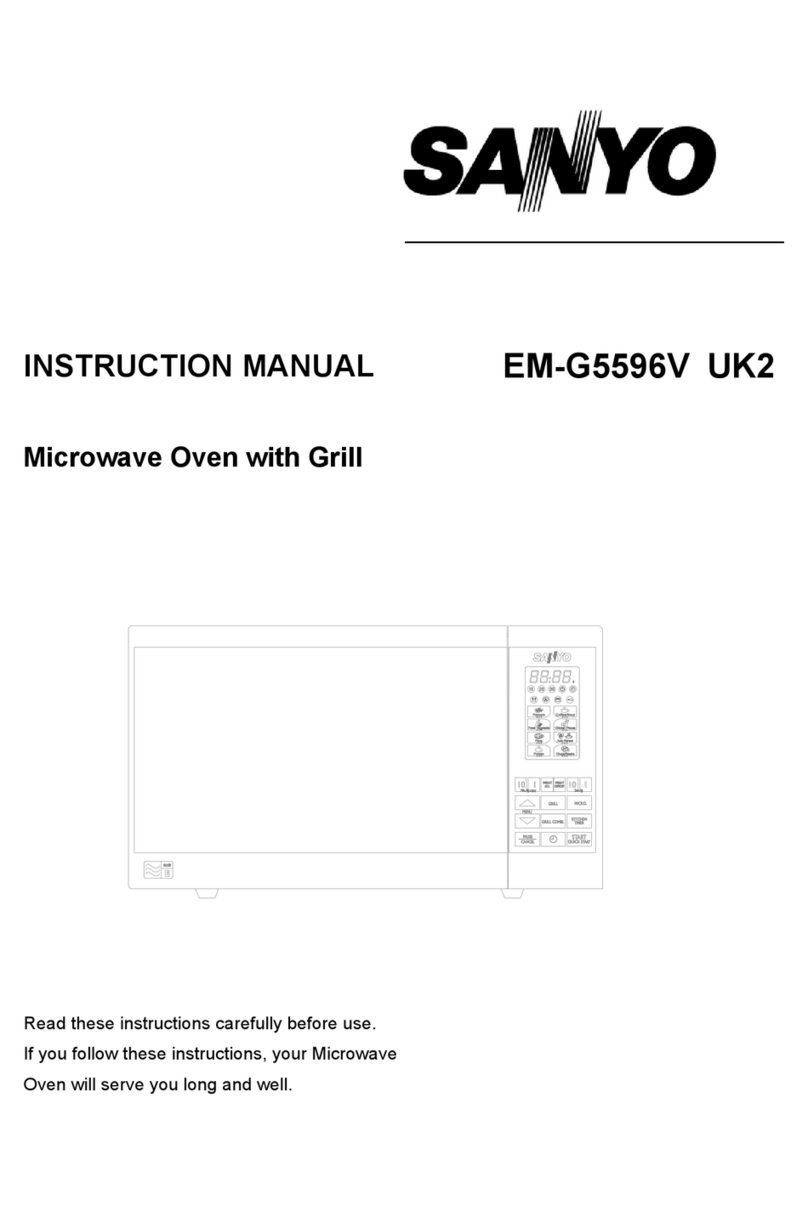R-895M - 39
Note: The parts marked "∆" may cause undue microwave exposure. / The parts marked "*" are used in
voltage more than 250V. / "§" Mark: Spare parts delivery section
REF. NO. PART NO. § DESCRIPTION Q'TY CODE
PARTS LIST
*
*
*
∆*
ELECTRIC PARTS
1- 1 FH-HZA075WRE0 U Thermistor 1 AN
1- 2 RTRN-A529WRE0 U TC transformer 1 AV
1- 3 QACCBA004URE3 U Power supply cord 1 AT
1- 4 FH-DZA035WRE0 U High voltage rectifier assembly 1 AP
1- 5 FPWBFA309WRE2 U Noise filter 1 AT
1- 6 QFS-CA025WRE0 U Fuse F8A 1 AC
1- 7 QFS-BA009WRE0 U Fuse 20A 1 AC
1- 8 RMOTEA373WRE0 U Convection motor 1 AV
1- 9 RC-QZA240WRE0 U High voltage capacitor 1 AR
1-10 RTHM-A098WRE0 U Thermal cut-out 125˚C off(MG) 1 AH
1-11 RTHM-A124WRZZ U Thermal cut-out 145˚C off 115˚C on (OVEN) 1 AH
1-12 RHET-A255WRZZ U Top grill heating element 1 AT
1-13 RHET-A248WRZ1 U Bottom grill heating element 1 AW
1-14 QSW-MA146WRZZ J Monitored latch switch 1 AC
1-15 QSW-MA147WRZZ J Stop switch 1 AG
1-16 QSW-MA146WRZZ J Monitor switch 1 AC
1-17 RMOTEA002URE1 U Fan motor 1 AW
1-18 RLMPTA066WRE0 U Oven lamp 1 AK
1-19 RTRN-A019URE0 U High voltage transformer 1 BF
1-20 RV-MZA243WRE1 U Magnetron 1 BH
1-21 RMOTDA227WRE0 U Turntable motor 1 AU
CABINET PARTS
2- 1 GCABDA001URP2 U Back plate 1 AQ
2- 2 GCABDA002URP0 U Sub back plate 1 AH
2- 3 GCABUW045URP0 U Outer case cabinet 1 AW
2- 4 GDAI-A002URP0 U Base plate 1 AR
2- 5 GLEGPA057WRE1 U Foot 2 AB
CONTROL PANEL PARTS
3- 1 DPWBFA184URK0 U Power unit 1 BC
3- 1A QCNCMA453DRE0 U 5-pin connector (CN-A) 1 AC
3- 1B QCNCMA414DRE0 U 2-pin connector (CN-B) 1 AB
3- 1C QCNCMA410DRE0 U 2-pin connector (CN-C) 1 AB
3- 1D QCNCMA230DRE0 U 4-pin connector (CN-E) 1 AC
3- 1E FW-VZA266DREZ U 15pin wire harness (WH-1) 1 AH
C1 RC-KZA087DRE0 U Capacitor 0.1 uF 50V 1 AB
C2 VCEAG31VW108M U Capacitor 1000 uF 35V 1 AE
C3 RC-KZA087DRE0 U Capacitor 0.1 uF 50V 1 AB
C4-5 VCEAG31VW106M U Capacitor 10 uF 35V 2 AB
D1-7 VHD1SS270A/-1 U Diode (1SS270A) 7 AA
D11-14 VHD1N4005E/-2 U Diode (1N4005E) 4 AA
D11-14 VHD1N4004S/-1T U Diode (1N4004S) (Interchangeable) 4 AA
Q2 VSKTA1274//-3 U Transistor (KTA1274) 1 AA
Q3 VSKRC243M//-3 U Transistor (KRC243M) 1 AB
R2 VRD-B12EF152J U Resistor 1.5K ohm 1/4W 1 AA
R3-4 VRS-B13AA511J U Resistor 510 ohm 1W 2 AB
R5 VRD-B12EF332J U Resistor 3.3K ohm 1/4W 1 AA
R6 VRS-B13AA201J U Resistor 200 ohm 1W 1 AB
RY1 RRLY-A117DRE0 U Relay (DU18D1-1P(M)-R) 1 AG
RY2 RRLY-A122DRE0 U Relay (DU18D1-1P(M)-R-S) 1 AG
RY3-4 RRLY-A113DRE0 U Relay (DU24D1-1P(M)-R) 2 AG
RY5-7 RRLY-B004MRE0 U Relay (FTR-F3AA024E) 3 AL
SP1 RALM-A014DRE0 U Buzzer (PKM22EPT) 1 AG
VRS1 RH-VZA034DRE0 U Varistor (10G471K) 1 AD
ZD2 VHEHZ201///-1 U Zener diode (HZ20-1) 1 AB
3- 2 DPWBFC239WRKZ U CPU unit 1 BC
3- 3 FUNTKC135URE0 U Key unit 1 AS
3- 4 HPNLCA123URR0 U Control panel frame 1 AV
3- 5 LHLD-A007URF1 U LCD holder 1 AD
3- 6 PSHEPA647WRE0 U LCD sheet 1 AL
3- 7 XEPSD30P10XS0 U Screw : 3mm x 10mm 6 AA
OVEN PARTS
4- 1 DOVN-A023URK0 U Oven cavity 1 BG
4- 2 LBNDKA107WRP1 U Capacitor holder 1 AD
4- 3 FDUC-A003URY0 U Air duct assembly 1 AL
4- 4 LANGQA005URP0 U Air separate angle B 1 AC
4- 5 PDUC-A636WRP1 U Air guide duct 1 AM
4- 6 PFILWA001URP0 U Lamp filter 1 AB
4- 7 PHOK-A002URF1 U Latch hook 1 AH
4- 8 LANGQA014URP0 U Turntable motor angle 1 AE
4- 9 PCUSUA019URE0 U Cushion 1 AA
4-10 FANGTA003URY0 U Turntable motor shaft assembly 1 AL
4-11 PPACGA002URE0 U Seal packing 1 AB
4-12 NFANJA038WRE0 U Fan blade 1 AF
∆
∆
